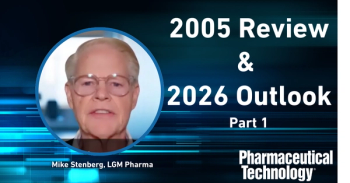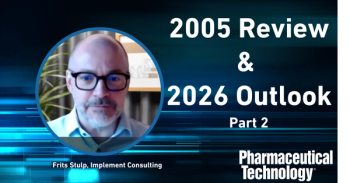
- Pharmaceutical Technology-12-02-2013
- Volume 37
- Issue 12
Inspiring the Next Generation
Scientists can share time and pharmaceutical knowledge with high school students.
While the primary focus of a publication such as Pharmaceutical Technology is aimed at discussing current technologies for the pharmaceutical industry, some consideration should be given to inspiring the next generation of scientists by stimulating interest in the application of pharmaceutical science. This is clearly the case in the United States, where secondary education institutions want to enhance an interest in science, technology, engineering, and mathematics (STEM) fields.
Pharmaceutical technologies are a STEM activity and, as such, deserve a voice in this arena. The volunteer outreach activities of a pharmaceutical scientist to high school students, whether through industrial or academic affiliation, cannot be underestimated. When an exceptional student is invited to work in an academic or industrial laboratory through a shadow or summer project, the experience can be career defining.
Other STEM activities are moving into the high school laboratory and, with creative and careful planning, can include pharmaceutical technologies. Through one such initiative, Bio-Link, biotechnology companies donate laboratory supplies for high school use, providing support for critically underfunded secondary education programs.
Pharmaceutical scientists can provide support to high schools through teacher training or directly to students as time and circumstances allow. Because a typical high school laboratory may have a limited instrumentation and consumables budget, pharmaceutical technology exercises should be offered in a self-contained or modular concept, from which a volunteer scientist and teacher can choose, based upon the laboratory/learning environment and available resources.
These teaching modules need not be expensive or sophisticated. The goal should be learning experiences that are hands-on, conceptual, and of course, fascinating.
Here are some simple teaching modules I have used:
• Salicylate assay with ferric chloride. This exercise, commonly used in undergraduate organic chemistry laboratories, is derived from the Trinder reagent-based assay of salicylic acid. As an introduction to drug analysis, a series of visual standards can be used to estimate drug concentration if a spectrophotometer is not available.
• Calcium alginate encapsulation. In this module, a chemical is mixed with sodium alginate and added dropwise to a calcium chloride solution, forming calcium alginate beads, which trap a chemical within the polysaccharide matrix. When black food coloring is mixed with the alginate, black rigid beads are formed with dramatic visual contrast. The beads can be rapidly filtered from the calcium chloride solution with a tea strainer and manually examined.
• Soil annelid contact toxicity test for drugs. This module was derived from pesticide testing procedures using earthworms to assess environmental impact. The test is remarkably simple. Earthworms are exposed to drugs applied to filter paper and, over time, removed to assess lethality of drugs absorbed through the earthworm cuticle. This is a relatively direct means to illustrate dose-response and toxicity.
These procedures require relatively few inexpensive chemicals and avoid the use of corrosive, flammable, volatile, and toxic agents and mammalian species (in observation of school district hazard restrictions). The most valuable resources are the time and expertise of the pharmaceutical scientist, including discussions following the laboratory. This is especially critical during the student’s junior or senior years, when career and college planning are coming into focus. Pharmaceutical technology is important enough to deserve this route of educational promotion.
For more information about the teaching modules, contact the author at
Timothy J. Smith, RPh, PhD, is a professor in the Department of Physiology and Pharmacology, Thomas J. Long School of Pharmacy and Health Sciences, University of the Pacific, Stockton, Calif.
Articles in this issue
about 12 years ago
Rail-Mounted Fluid Bed Dryers Allow Cleaning Accessabout 12 years ago
Biotechnology Innovation and Growth in Israelabout 12 years ago
Drug Manufacturing Focus: Why India?about 12 years ago
Clinical Trials Head East to Asiaabout 12 years ago
Climate Change in Outsourcingabout 12 years ago
Deficiencies Found in API Inspectionsabout 12 years ago
Q&A with Brian Galliher, Cook Pharmicaabout 12 years ago
Establishing a Minimum Incubation Time for Biological Indicatorsabout 12 years ago
Implementing QbD in Sterile ManufacturingNewsletter
Get the essential updates shaping the future of pharma manufacturing and compliance—subscribe today to Pharmaceutical Technology and never miss a breakthrough.




